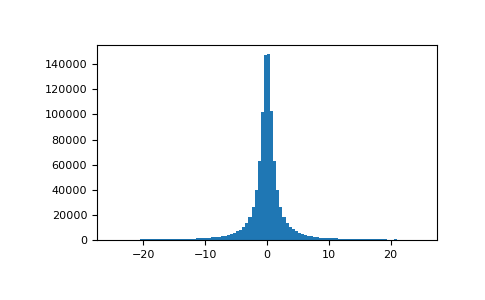numpy.random.RandomState.standard_cauchy¶
method
-
RandomState.standard_cauchy(size=None)¶ Draw samples from a standard Cauchy distribution with mode = 0.
Also known as the Lorentz distribution.
Note
New code should use the
standard_cauchymethod of adefault_rng()instance instead; please see the Quick Start.- Parameters
- sizeint or tuple of ints, optional
Output shape. If the given shape is, e.g.,
(m, n, k), thenm * n * ksamples are drawn. Default is None, in which case a single value is returned.
- Returns
- samplesndarray or scalar
The drawn samples.
See also
Generator.standard_cauchywhich should be used for new code.
Notes
The probability density function for the full Cauchy distribution is
and the Standard Cauchy distribution just sets
and
The Cauchy distribution arises in the solution to the driven harmonic oscillator problem, and also describes spectral line broadening. It also describes the distribution of values at which a line tilted at a random angle will cut the x axis.
When studying hypothesis tests that assume normality, seeing how the tests perform on data from a Cauchy distribution is a good indicator of their sensitivity to a heavy-tailed distribution, since the Cauchy looks very much like a Gaussian distribution, but with heavier tails.
References
- 1
NIST/SEMATECH e-Handbook of Statistical Methods, “Cauchy Distribution”, https://www.itl.nist.gov/div898/handbook/eda/section3/eda3663.htm
- 2
Weisstein, Eric W. “Cauchy Distribution.” From MathWorld–A Wolfram Web Resource. http://mathworld.wolfram.com/CauchyDistribution.html
- 3
Wikipedia, “Cauchy distribution” https://en.wikipedia.org/wiki/Cauchy_distribution
Examples
Draw samples and plot the distribution:
>>> import matplotlib.pyplot as plt >>> s = np.random.standard_cauchy(1000000) >>> s = s[(s>-25) & (s<25)] # truncate distribution so it plots well >>> plt.hist(s, bins=100) >>> plt.show()

